Click on images to enlarge
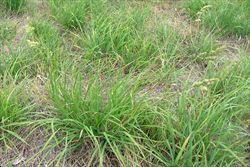
infestation (Photo: Sheldon Navie)
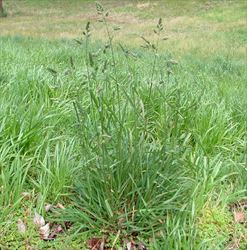
habit in flower (Photo: Sheldon Navie)

habit in fruit (Photo: Sheldon Navie)
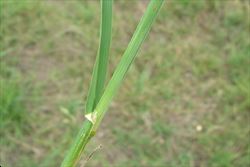
close-up of stem and base of leaf blade (Photo: Sheldon Navie)
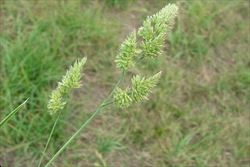
young seed-head (Photo: Sheldon Navie)
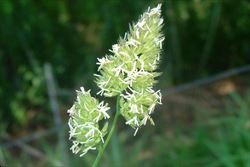
flower spikelets (Photo: Sheldon Navie)
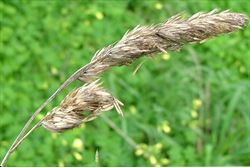
mature seed-head (Photo: Sheldon Navie)
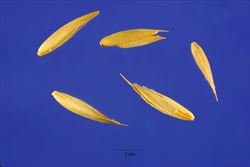
close-up of 'seeds' (Photo: Steve Hurst at USDA PLANTS Database)
Scientific Name
Dactylis glomerata L.
Family
Gramineae (South Australia)Poaceae (Queensland, New South Wales, the ACT, Victoria, Tasmania, Western Australia and the Northern Territory)
Common Names
barnyard grass, cat's grass, cock's foot, cock's-foot, cocksfoot, cocksfoot grass, cocksfootgrass, cockspur, orchard grass, orchardgrass
Origin
Native to northern Africa (i.e. Algeria, Egypt, Libya, Morocco and Tunisia), Europe (i.e. Denmark, Finland, Ireland, Norway, Sweden, UK, Austria, Belgium, Czechoslovakia, Germany, Hungary, the Netherlands, Poland, Switzerland, Belarus, Estonia, Latvia, Lithuania, Moldova, Russia, Ukraine, Bulgaria, Italy, Romania, Yugoslavia, France, Portugal and Spain), western Asia, Mongolia, Pakistan and northern India.
Naturalised Distribution
Widely naturalised southern Australia (i.e. in south-eastern Queensland, New South Wales, ACT, Victoria, Tasmania, and the southern parts of South Australia and Western Australia).
Also naturalised on Lord Howe Island and Norfolk Island, and in many other parts of the world (i.e. South Africa, La Réunion, New Zealand, Hawaii, the USA, Central America and South America).
Notes
Cocksfoot (Dactylis glomerata) is regarded as an environmental weed in Victoria, Tasmania, ACT and New South Wales. It has been grown as a pasture grass, but has also spread into disturbed sites and natural plant communities. It is invasive in heathlands, open woodlands, forests, riparian habitats, freshwater wetlands and coastal environs, where it forms dense swards that suppress native grasses and forbs.
For example, it has invaded some low-lying parts of the open woodlands that form the Queanbeyan Nature Reserve in the ACT. This reserve is the only protected habitat of the endangered button wrinklewort (Rutidosis leptorrhynchoides), and cocksfoot (Dactylis glomerata) directly competes with it for space, nutrients, light and moisture.

